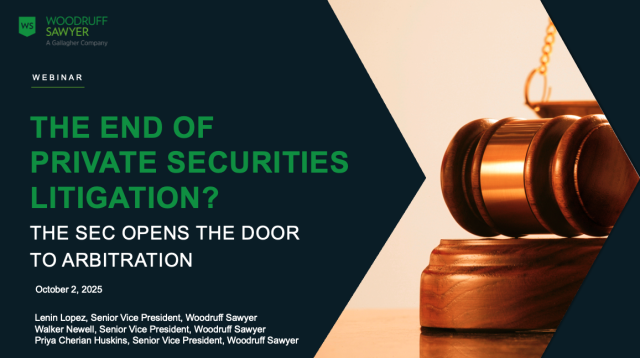D&O Notebook Editor
Priya Cherian Huskins
Priya is a recognized expert and frequent speaker on the topic of D&O liability risk and its mitigation. In addition to consulting on D&O insurance, she counsels clients on corporate governance matters, including ways to reduce their exposure to shareholder lawsuits and regulatory investigations. Priya serves on Woodruff Sawyer's board, and the board of three public companies. Priya's expertise and influence in the industry have earned her several awards and accolades. She is frequently quoted in major publications including the WSJ. She is the author and editor of the D&O Notebook.





















